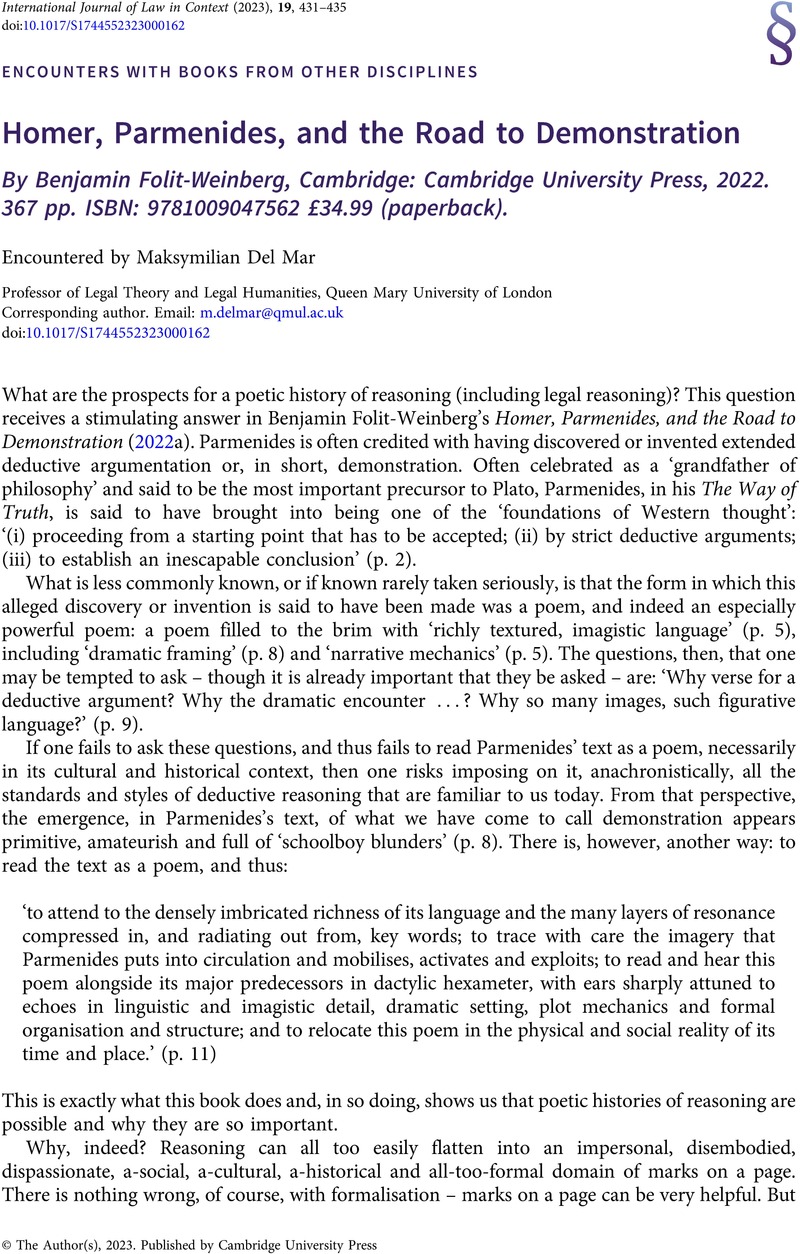No CrossRef data available.
Article contents
Homer, Parmenides, and the Road to Demonstration By Benjamin Folit-Weinberg , Cambridge: Cambridge University Press, 2022. 367 pp. ISBN: 9781009047562 £34.99 (paperback).
Review products
Homer, Parmenides, and the Road to Demonstration By Benjamin Folit-Weinberg , Cambridge: Cambridge University Press, 2022. 367 pp. ISBN: 9781009047562 £34.99 (paperback).
Published online by Cambridge University Press: 13 June 2023
Abstract
An abstract is not available for this content so a preview has been provided. Please use the Get access link above for information on how to access this content.

Information
- Type
- Encounters with Books from Other Disciplines
- Information
- International Journal of Law in Context , Volume 19 , Special Issue 3: ‘Law in Context’ in Post-Colonial South Asia , September 2023 , pp. 431 - 435
- Copyright
- © The Author(s), 2023. Published by Cambridge University Press
References
Brooks, P (2017) Clues, Evidence, Detection: Law Stories. Narrative 25(1), 1–27.CrossRefGoogle Scholar
Burrow, C (2019) Imitating Authors: Plato to Futurity. Oxford: Oxford University Press.CrossRefGoogle Scholar
Dutilh Novaes, C (2020) The Dialogical Roots of Deduction. Cambridge: Cambridge University Press.CrossRefGoogle Scholar
Folit-Weinberg, B (2022a) Homer, Parmenides, and the Road to Demonstration. Cambridge: Cambridge University Press.CrossRefGoogle Scholar
Folit-Weinberg, B (2022b) The Language of Roads and Travel in Homer: Hodos and Keleuthos
. Classical Quarterly 72(1), 1–24.CrossRefGoogle Scholar
Gill, C (1996) Personality in Greek Epic, Tragedy, and Philosophy: The Self in Dialogue. Oxford: Oxford University Press.Google Scholar
Nightingale, A (2009) Genres in Dialogue: Plato and the Construct of Philosophy. Cambridge: Cambridge University Press.Google Scholar

